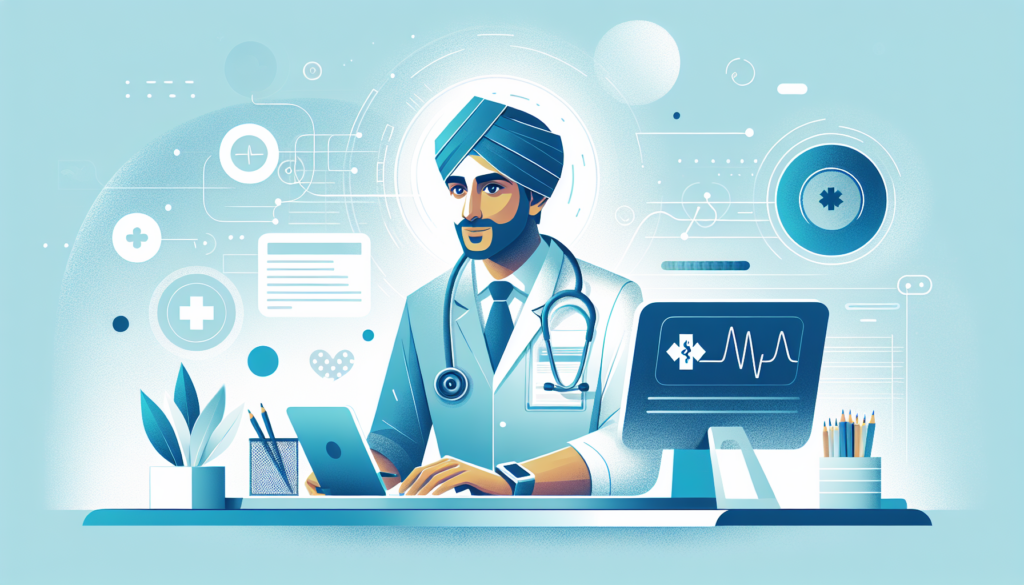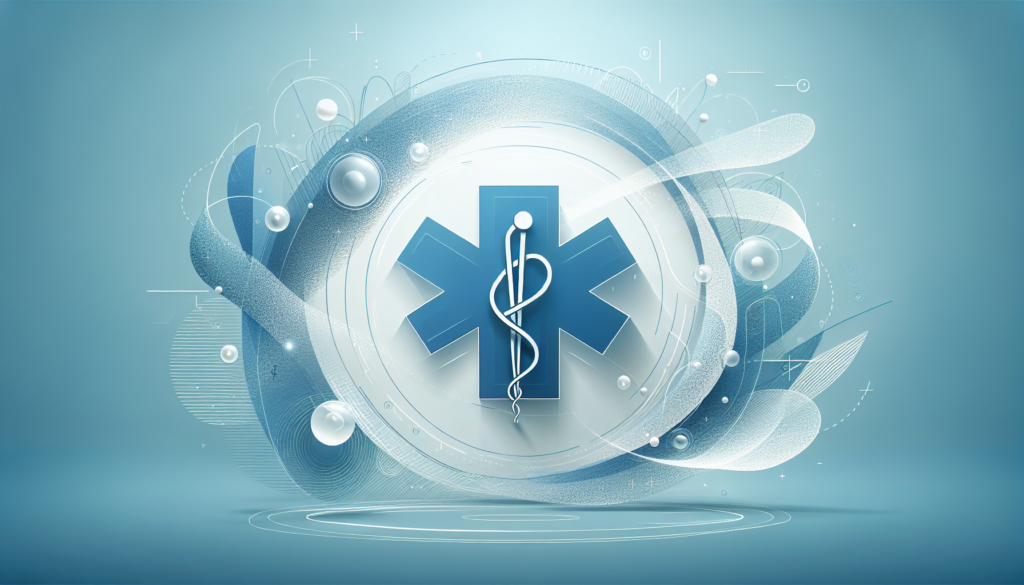Understanding Medical Transcription Samples: A Comprehensive Overview
Within the meticulous world of healthcare documentation, medical transcription samples serve a significant role in illustrating the standards and accuracy required for effective patient care. As a fundamental aspect of medical record-keeping, transcription samples provide a detailed snapshot of the dialogue between healthcare professionals and their patients. This content is essential for the ongoing treatment and assessment of patients, as well as for legal compliance and billing purposes. To comprehend the full scope of these samples, one must delve into the intricacies they contain, including diagnostic information, treatment plans, and patient histories, all meticulously crafted into clear and organized text.
Given their critical nature, medical transcription samples must adhere to a high standard of clarity and accuracy. Medical practitioners rely heavily on these documents, making the quality of transcription a top priority. However, the level of detail and specialized terminology involved can make the transcription process a time-consuming and error-prone task. This is where technology comes into play, particularly with the advent of AI-powered solutions like Scribemd.ai, which optimize the process by ensuring high accuracy rates and rapid response times, streamlining the workflow for medical professionals.
- Functionality: Transcription samples must accurately convey all verbal communications.
- Consistency: Samples should follow a consistent format for ease of understanding and reference.
- Compliance: Adhering to HIPAA guidelines and other legal requirements is non-negotiable.
- Integration: The ability to integrate samples with other healthcare management systems.
Deciphering the terminology and format exclusive to medical transcription requires specialized skills. The samples encapsulate a wide range of medical encounters, from routine check-ups to complex surgical procedures. Each transcription must capture not just words, but also the context and nuances necessary for others to understand the subtleties of the patient-physician interaction. For this reason, samples serve as a critical educational resource for aspiring medical transcriptionists and an operational blueprint for experienced professionals aiming to perfect the documentation within their practice.
The Importance of High-Quality Medical Transcription Samples for Healthcare
In today’s fast-paced healthcare environment, medical professionals face a seemingly insurmountable amount of documentation tasks. The necessity for comprehensive and accurate patient records is paramount, not only for the continuity of care but also for legal compliance and billing purposes. High-quality medical transcription samples play a crucial role in the maintenance of this meticulous record-keeping system. They serve as the gold standard for precise documentation, ensuring that every factor of a patient’s encounter is captured accurately and coherently. These samples become blueprints for success, illustrating the clarity, detail, and medical relevance that should be emulated in all charting.
Moreover, the maintenance of high-quality medical transcription samples assists healthcare professionals in achieving several vital objectives. Primarily, it aids in the delivery of an elevated level of patient care. When healthcare providers have access to clear, detailed medical records, they can make informed decisions swiftly, reducing the risk of errors and enhancing patient outcomes. Additionally, as documentation serves as a communication tool among providers, high-quality medical transcription samples ensure the seamless exchange of critical patient information, thereby fostering a collaborative care environment.
- Ensuring accurate patient documentation for continuity of care
- Compliance with legal standards and billing requirements
- Supporting informed decision-making and quality patient outcomes
- Enabling effective communication between healthcare providers
Healthcare institutions that prioritize the use of superior transcription samples are also better equipped to navigate the complexities of healthcare regulations. High accuracy in documentation is a deterrent to potential legal issues that can stem from misunderstandings or incomplete records. Furthermore, in the context of billing, precise transcripts are critical for the appropriate coding of services, which directly impacts revenue cycle management. The presence of exemplar transcription samples guides not only the physicians and the administrative staff but also steers the integration of technologically advanced solutions like AI-powered digital scribes, which rely on such high standards to learn and improve upon the documentation process.
- Preventing legal issues related to medical documentation
- Fostering accurate medical coding for billing purposes
- Guiding technological advancements in automated documentation
Analyzing Different Types of Medical Transcription Samples
Medical transcription samples come in various formats and are tailored to the distinct needs of healthcare settings. It’s crucial to comprehend the nuances between these forms to appreciate the scope of transcription services and the potential of AI-enhanced digital scribing platforms like ScribeMD. For instance, SOAP notes (Subjective, Objective, Assessment, Plan) outline a clear, methodical pathway of patient interactions, emphasizing the doctor’s clinical thought process and planning. Alternatively, medical professionals might utilize operative reports, which give a detailed account of surgical procedures, including pre- and post-operative diagnoses, surgical steps, and outcomes. The articulate structure of these transcriptions is vital to ensuring flawless recording and easy retrieval of patient data.
To ensure that medical documentation meets the high standards required for patient care and legal scrutiny, it’s important to parse through and analyze examples of these different types. Correspondence letters between healthcare providers, discharge summaries, and patient history reports are other common transcription samples that each serve a dedicated purpose. Correspondence letters facilitate communication regarding patient management between different doctors, while discharge summaries provide a comprehensive report upon a patient’s release from a hospital. Patient history reports, on the other hand, compile the complete medical history of an individual, serving as a foundational document for future care.
Accuracy and expediency are two pillars of effective medical transcription, which samples must reflect. In analyzing different types, one should also consider how templates and free text entries serve their respective roles. Templates, with their fixed structure, lend themselves to consistency and standardization across medical records. They enable quick insertion of patient data, which AI-driven tools like ScribeMD excel in capturing accurately. Conversely, free text entries allow for a more detailed physician narrative, capturing uniqueness in patient care that may not fit into standard templates. Analyzing these samples thoroughly would reveal that despite variations, the multiplicity of formats is unified by a need for precision in articulating patient care.
When evaluating the effectiveness of transcription samples in reflecting patient care realities, one must also consider the regulatory frameworks guiding medical documentation. For example, compliance with the Health Insurance Portability and Accountability Act (HIPAA) in the United States necessitates certain privacy and security measures for patient data. Particularly when dealing with sensitive health information, transcription samples must showcase the ability to capture detailed medical narratives without compromising patient confidentiality. By analyzing various transcription samples’ adherence to these regulations, the benefits of sophisticated AI transcription tools become apparent. Such systems not only guarantee precision but also ensure compliance with legal standards, which is paramount in the sensitive arena of healthcare data.
How AI-Powered Solutions, like Scribemd.ai, Are Revolutionizing Medical Transcriptions
The realm of medical transcription has entered a new era with the advent of AI-powered solutions such as Scribemd.ai. These innovative platforms are not only enhancing the accuracy of transcribed medical records but are also streamlining the entire documentation process. By using advanced artificial intelligence and language learning models, these solutions can interpret the nuances of medical dialogue, detect specific terms, and automate the transcription process. As a result, healthcare providers are witnessing a transformative change in the way patient information is documented, reducing the likelihood of errors that can arise from manual transcriptions.
One salient feature of AI-powered digital scribes like Scribemd.ai is their ability to offer a high accuracy rate in the conversion of voice notes to text. The application of machine learning algorithms allows for continuous improvement in the recognition of medical jargon, accent variations, and complex terminology. As AI models are trained on vast datasets, they become more adept at understanding the context and ensuring that transcriptions reflect the intended meaning with precision. This level of accuracy not only aids in maintaining quality patient records but also plays a crucial role in legal compliance and reimbursement procedures.
- Enhanced transcription accuracy
- Adaptive learning from expansive medical datasets
- Contextual understanding for precise documentation
Another key advancement brought about by AI in the sphere of medical transcription is the significant reduction of administrative burdens on medical professionals. Doctors and healthcare staff often spend a considerable amount of time in documentation, which could alternatively be used for patient care. Scribemd.ai helps to alleviate this load by rapidly processing spoken words into formal medical notes, thereby allowing physicians to dedicate more attention to their patients. This not only improves the doctor-patient relationship but also enhances the overall quality of care provided. The ability to multitask effectively, with the help of an AI assistant, is reshaping the landscape of the medical profession, revising the role of practitioners towards more strategic and patient-centred functions.
- Reduced time spent on paperwork
- More time for patient care and interaction
- Refocusing of medical professionals on core tasks
Best Practices for Evaluating and Using Medical Transcription Samples
When healthcare providers seek to implement or upgrade their transcription solutions with services like Scribemd.ai, evaluating medical transcription samples is a crucial step in the decision-making process. To ensure high-quality documentation and compliance with regulatory standards, assessing the accuracy, readability, and formatting of transcription samples is essential. The first best practice is to initiate a rigorous evaluation process by scrutinizing multiple samples for errors. Critical areas to examine include the correct use of medical terminology, attention to detail in patient information, and consistency in formatting. This comprehensive assessment helps establish a benchmark for quality, setting the bar for what medical professionals can expect from their transcription service.
Another vital best practice is to verify the context and clarity of the transcripts. Given the nuances of medical dictation, it is paramount that the transcribed notes accurately reflect the intended message, including the subtleties of patient history and diagnoses. Clinicians should look for signs of intelligent interpretation within the samples, such as correct inferring of homophones (words that sound alike but have different meanings), which demonstrates the transcription service’s capacity to intuitively understand and process complex medical dialogue.
- Examine medical transcription samples for:
- Use of accurate medical terminology
- Correct patient information
- Consistent formatting
- Check for context and clarity to ensure transcription services:
- Accurately reflect nuanced patient cases
- Intelligently interpret homophones and complex dialogue
Interoperability with existing Electronic Health Record (EHR) systems is another consideration that cannot be understated when evaluating medical transcription samples. The ability of the transcription service to integrate seamlessly with a practice’s current EHR is paramount for maintaining workflow efficiency and data integrity. Medical practitioners should inquire about the compatibility of transcription services with their EHR platform and seek samples that demonstrate smooth integration, accurate data capture, and transfer. This will also have the added benefit of reducing the likelihood of transcription-induced errors during the documentation process.
Finally, evaluating the transcription service’s commitment to compliance with health information privacy and security regulations, such as HIPAA in the United States, is fundamental. Health providers must ensure that sample transcripts meet all legal and ethical requirements for protecting patient confidentiality. This is critical in maintaining trust with patients and safeguarding practice reputation. Providers should look for clear evidence within samples of anonymized patient data, secure data handling, and proper documentation practice to mitigate potential risks associated with non-compliance.
- Ensure transcription samples demonstrate:
- Compatibility with EHR systems
- Efficient data capture and transfer
- Examine the service for:
- Adherence to privacy and security regulations (HIPAA)
- Proper handling of confidential patient information



